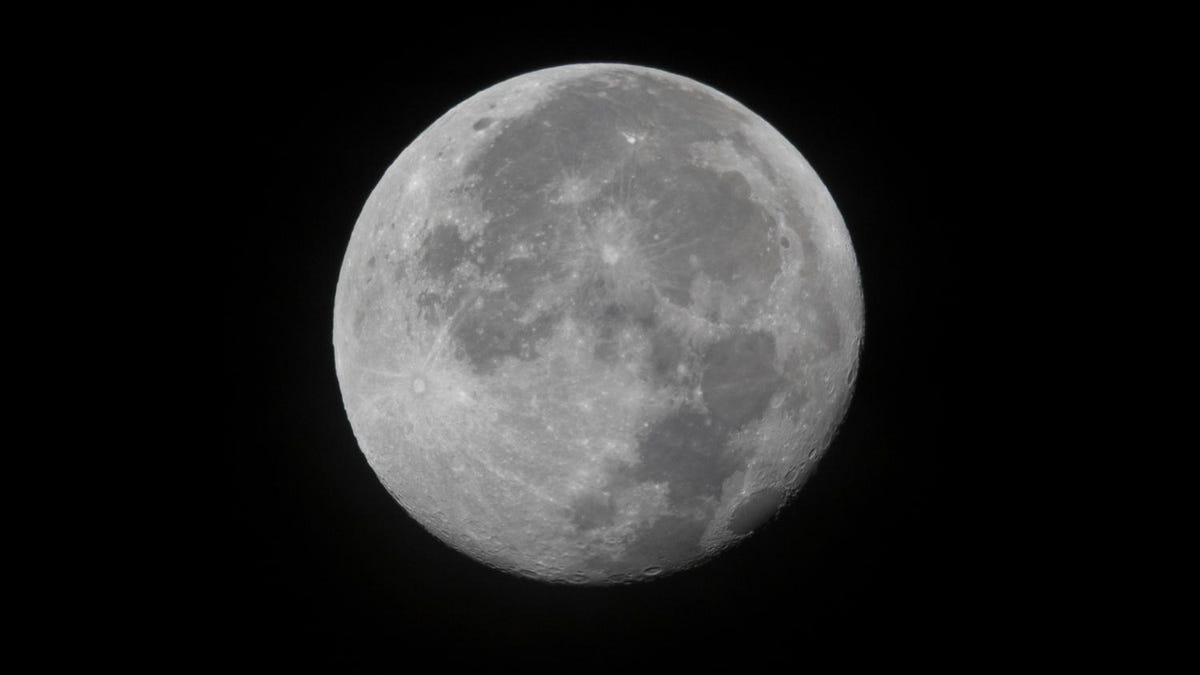NASA predicts moon 'wobble' and climate change will lead to more floods, more often
The slightest change in the moon's orbit could see big problems for coastal regions.

A brilliant full moon rises at NASA's Kennedy Space Center in Florida in 2017.
The moon is wobbling. There's really no other way to say it. A slight alteration to the moon's orbit -- a wobble, if you will -- has raised both eyebrows and questions about what effect such a slight jiggle may have here on Earth. It's funny to say, sure, but the potential ramifications of a moon wobble have scientists concerned for the future.
In a study, published in the journal Nature Climate Change in June, scientists suggest that by the 2030s, the wobble will have enough of an effect on the moon's gravitational pull to impact rising sea levels, seeing coastal cities all around the US cop a drastic increase in flooding. Climate change is already causing global sea levels to rise in two ways: warming waters cause the volume of the ocean to expand and increased glacier and ice sheet melt.
For low-lying cities that already face this kind of "high-tide" flood risk, it could spell significant damage and concern in the not-so distant future.
NASA Administrator Bill Nelson said, "The combination of the moon's gravitational pull, rising sea levels, and climate change will continue to exacerbate coastal flooding on our coastlines and across the world. NASA's Sea Level Change Team is providing crucial information so that we can plan, protect, and prevent damage to the environment and people's livelihoods affected by flooding."
Scientists identified the tipping points by studying tide gauge locations in the coastal US (excepting Alaska). Using the National Oceanic and Atmospheric Administration's existing sea level rise scenarios and flood thresholds, they were able to create a statistical framework that projects likely scenarios over the next 60 years.
This will help narrow down likely timelines for significant flooding and help pinpoint how likely it is a flood might occur in different months of the year. Information like this could be crucial for coastal inhabitants and planners.
But what does the wobbly moon have to do with this? Climate scientists have warned that global sea levels have been rising -- and will continue to rise -- for quite some time. How does the wobble change what's already occurring?
Scientists have actually known about the wobble for centuries -- it was first discovered in 1728 -- however the issue is that sea levels have already risen to a point where we now must consider how the moon's existing tide cycles will affect the globe.
Experts split the moon's 18.6-year orbit into two halves, or tide cycles. For the duration of the first half, tides on Earth are suppressed, with high tides lower than average and low tides higher than average -- a "meet in the middle" kind of effect. For the other half, however, the effect is reversed. Tides are amplified: High tides get higher and low tides get lower.
The issue is that in the 2030s, when sea levels are expected to have risen considerably, the Earth will be in the amplified part of the tide cycle. High tides will be higher than ever, causing flood numbers to dramatically increase on the coastlines.
With this new predictive model, scientists can narrow down when and where these floods are most likely to occur -- and potentially save both lives and livelihoods in the process.

